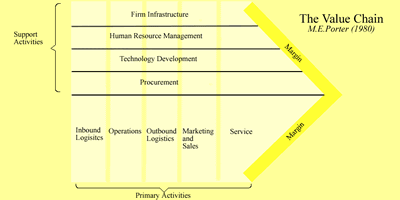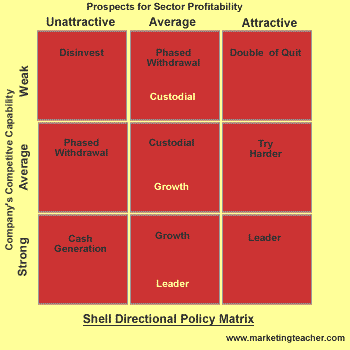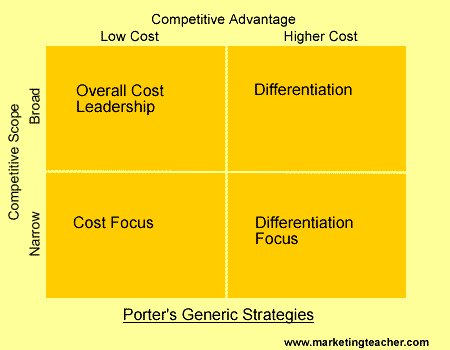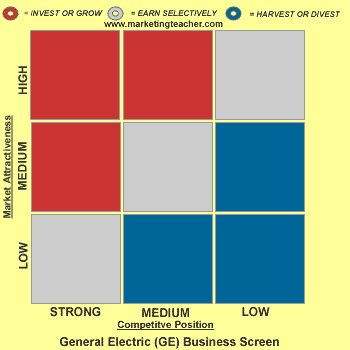Buying advertising on the Mobile Web is similar to buying display advertising on the Internet. Graphical, interactive display ads are the predominant ad unit. In most cases, Mobile Web banner ad impressions can be purchased on a cost per thousand (CPM) or a cost per click (CPC) basis. Mobile offers targeting possibilities beyond that of traditional media. As this develops further, we would expect to see a range of targeting options
made available covering context, demographic and behavioral attributes. Any targeting options made available will comply with existing national level, legal and regulatory frameworks governing privacy and personal data.
Some operators and publishers that have Mobile Web sites sell mobile ads directly, while others allow their inventory to be sold by a third party, either as premium inventory or as part of a mobile ad network.
The biggest difference between buying Mobile Web display ads and Internet display ads is that Mobile Web ads are not sold by unit size. Because the sizes and resolutions of mobile phone screens vary, the way the content looks on those mobile phones will also vary. The sizes of Mobile Web banners as defined in the
MMA Mobile Advertising Guidelines are optimized to best fit the mobile phone on which the ad is being
viewed. This improves the user experience, ad readability, creative flexibility and effectiveness. This is why many publishers and ad networks may ask you to provide multiple versions of your banner creative with your Mobile Web campaign.
by mma glo
Search This Blog
Thursday 7 July 2011
How do I buy advertising on the Mobile Web?
Labels:
Blackberry,
China Mobile,
CPC,
CPM,
Dell,
how do i busy advertising,
i phone,
internet,
MMA,
Mobile advertising,
mobile web,
Motorola,
Nokia,
samsung,
web banner
Mobile Web
Mobile Web Advertising Overview
The Mobile Web is fast emerging as a mainstream information, entertainment and transaction source for people on the move and away from a PC. Browsing the Mobile Web is similar to traditional PC-based Web browsing and provides users with access to news, sports, weather, entertainment and shopping sites.
However, there are some significant differences between PCbased access and phone-based access:
• The mobile phone is a highly, targeted device with typically one user. As such, powerfully accurate and relevant communication messages can be delivered where users become instantly engaged with campaigns and content resulting in increased campaign effectiveness.
• The environment in which people interact with their mobile phone does not lend itself to detailed information
search and delivery. Instead, mobile users seek quick and convenient access to information and services when they are out and about. Space on the mobile phone screen is at a premium, and users have limited input mechanisms, so Mobile Web sites need to be easy to navigate using just the mobile phone keypad.
• Today’s mobile phones have a broad range of different form factors, screen sizes and resolutions, all of which presents a challenge for the display and optimal viewing of content and advertising. This document’s recommendations directly address this challenge.
Many operators provide a “home page” that is configured to work well with their subscribers’ browsers. The operator portal (also known as the carrier’s “deck” or on-deck) provides a variety of links to branded, mobile-specific external sites to make it easier for subscribers to navigate. Increasingly, mobile users browse
outside their operator portal. These ”off-portal” or off-deck sites are becoming important destinations for Mobile Web browsing, with sites such as Yahoo!, Facebook, BBC and Sky offering tailored
mobile experiences.
by mma glo
Labels:
ads,
Blackberry,
cheap marketing ways,
China Mobile,
home page,
i phone,
Marketing,
Mobile advertising,
mobile web,
Motorola,
Nokia,
samsung,
telecommunication
Mobile Advertising
Introduction
Mobile advertising is a rapidly growing sector providing brands, agencies and marketers the opportunity to connect with consumers beyond traditional and digital media directly on their mobile phones. This document is an overview on the mobile media channels available to advertisers today, including the benefits offered by each, and considerations to use in selecting and optimizing mobile advertising campaigns.
This document is adjunct to the Advertising Guidelines, which provide technical specifications, global formats, guidelines and best practices for each mobile channel.
Today, mobile phones can be utilized for much more than just making and receiving calls. Besides voice services, mobile users have access to data services such Short Message Service (SMS), also known as text messaging, picture messaging, content downloads and the Mobile Web. These media channels carry both
content and advertising.
The mobile phone is an extremely personal device. One mobile phone typically has one unique user. This makes the mobile phone a precisely targeted communication channel, where users are highly engaged with content. As a result, the mobile channel delivers excellent campaign effectiveness and response
levels compared to other media.
Mobile is valuable as a stand-alone medium for advertising, but it’s also well suited for a vital role in fully integrated cross-media campaign plans, including TV, print, radio, outdoor, cinema, online and direct mail. These examples illustrate the ways brands and marketers use the mobile channel to engage and interact
with consumers:
• Click to call (users place an outgoing call to the content provider or advertiser)
• Click to locate (users find, for example, the closest car dealer or movie theatre, enabled by location-based services)
• Click to order brochure (users receive marketing materials by supplying their postal addresses)
• Click to enter competition (users enter text or sweepstake to win prizes)
• Click to receive email (users receive an email and a link to online site by supplying their email address)
• Click to receive mobile coupon (users receive an electronic coupon on their mobile phone that can be redeemed immediately at a participating merchant)
• Click to buy (users make a purchase paid for with a credit card, added to their monthly mobile bill or using some other form of mobile payment)
• Click to download content (users download content, including logos, wallpapers or ring tones, onto their mobile phones)
• Click to enter branded Mobile Web site (users click a banner to get connected to standing or campaign-specific Mobile Web site)
• Click to forward content (users forward relevant content
to friends, creating a viral campaign effect)
• Click to video (users click a banner to view an advertiser’s commercial for a product or service)
• Click to vote (users reply message ballot or poll from their mobile phone and provide marketers and brands with valuable research insights)
When designing a mobile advertising campaign, there are multiple channels available to reach the consumer. Those include Mobile Web sites, mobile applications, mobile messaging and mobile video, all of which can be integrated into the interactive campaigns previously described. Each channel can link to additional mobile content or channels, as well as to complementing traditional media. Mobile provides a powerful instant and
interactive response path, such as consumers sending a keyword to a short code via SMS, or registering on a Mobile Web site.
by mma glo
Labels:
Airtel,
Blackberry,
China,
China Mobile,
i phone,
inida,
Mobile advertising,
Motorola,
Nokia,
Pakistan,
USA
Value Chain Analysis
The value chain is a systematic approach to examining the development of competitive advantage. It was created by M. E. Porter in his book, Competitive Advantage (1980). The chain consists of a series of activities that create and build value. They culminate in the total value delivered by an organisation. The 'margin' depicted in the diagram is the same as added value. The organisation is split into 'primary activities' and 'support activities.

Primary Activities.
Inbound Logistics.
Here goods are received from a company's suppliers. They are stored until they are needed on the production/assembly line. Goods are moved around the organisation.
Operations.
This is where goods are manufactured or assembled. Individual operations could include room service in an hotel, packing of books/videos/games by an online retailer, or the final tune for a new car's engine.

Outbound Logistics.
The goods are now finished, and they need to be sent along the supply chain to wholesalers, retailers or the final consumer.
Marketing and Sales.
In true customer orientated fashion, at this stage the organisation prepares the offering to meet the needs of targeted customers. This area focuses strongly upon marketing communications and the promotions mix.
Service.
This includes all areas of service such as installation, after-sales service, complaints handling, training and so on.
Support Activities.
Procurement.
This function is responsible for all purchasing of goods, services and materials. The aim is to secure the lowest possible price for purchases of the highest possible quality. They will be responsible for outsourcing (components or operations that would normally be done in-house are done by other organisations), and ePurchasing (using IT and web-based technologies to achieve procurement aims).
Technology Development.
Technology is an important source of competitive advantage. Companies need to innovate to reduce costs and to protect and sustain competitive advantage. This could include production technology, Internet marketing activities, lean manufacturing, Customer Relationship Management (CRM), and many other technological developments.
Human Resource Management (HRM).
Employees are an expensive and vital resource. An organisation would manage recruitment and s election, training and development, and rewards and remuneration. The mission and objectives of the organisation would be driving force behind the HRM strategy.
Firm Infrastructure.
This activity includes and is driven by corporate or strategic planning. It includes the Management Information System (MIS), and other mechanisms for planning and control such as the accounting department.
by Mkt Teachers
Labels:
Firm Infrastructure,
HRM,
Inbound Logistics,
Marketing and Sales,
Operations,
Outbound Logistics,
Primary Activities,
Procurement,
Service,
Technology Development,
Value Chain Analysis
Shell Directional Policy Matrix
A Nine Celled directional Policy Matrix
The Shell Directional Policy Matrix is another refinement upon the Boston Matrix. Along the horizontal axis are prospects for sector profitability, and along the vertical axis is a company's competitive capability. As with the GE Business Screen the location of a Strategic Business Unit (SBU) in any cell of the matrix implies different strategic decisions. However decisions often span options and in practice the zones are an irregular shape and do not tend to be accommodated by box shapes. Instead they blend into each other.

Each of the zones is described as follows:
- Leader - major resources are focused upon the SBU.
- Try harder - could be vulnerable over a longer period of time, but fine for now.
- Double or quit - gamble on potential major SBU's for the future.
- Growth - grow the market by focusing just enough resources here.
- Custodial - just like a cash cow, milk it and do not commit any more resources.
- Cash Generator - Even more like a cash cow, milk here for expansion elsewhere.
- Phased withdrawal - move cash to SBU's with greater potential.
- Divest - liquidate or move these assets on a fast as you can.
by Mkt Teachers
Labels:
Custodial,
Divest,
Growth,
Leader,
Nine Celled directional Policy Matrix,
Shell Directional Policy Matrix
Generic Strategies - Michael Porter (1980)
Generic strategies were used initially in the early 1980s, and seem to be even more popular today. They outline the three main strategic options open to organization that wish to achieve a sustainable competitive advantage. Each of the three options are considered within the context of two aspects of the competitive environment:

Sources of competitive advantage - are the products differentiated in any way, or are they the lowest cost producer in an industry?Competitive scope of the market - does the company target a wide market, or does it focus on a very narrow, niche market?
The generic strategies are: 1. Cost leadership, 2. Differentiation, and 3. Focus.
1. Cost Leadership.
The low cost leader in any market gains competitive advantage from being able to many to produce at the lowest cost. Factories are built and maintained, labor is recruited and trained to deliver the lowest possible costs of production. 'cost advantage' is the focus. Costs are shaved off every element of the value chain. Products tend to be 'no frills.' However, low cost does not always lead to low price. Producers could price at competitive parity, exploiting the benefits of a bigger margin than competitors. Some organizations, such as Toyota, are very good not only at producing high quality autos at a low price, but have the brand and marketing skills to use a premium pricing policy.
2. Differentiation
Differentiated goods and services satisfy the needs of customers through a sustainable competitive advantage. This allows companies to desensitize prices and focus on value that generates a comparatively higher price and a better margin. The benefits of differentiation require producers to segment markets in order to target goods and services at specific segments, generating a higher than average price. For example, British Airways differentiates its service.
The differentiating organization will incur additional costs in creating their competitive advantage. These costs must be offset by the increase in revenue generated by sales. Costs must be recovered. There is also the chance that any differentiation could be copied by competitors. Therefore there is always an incentive to innovated and continuously improve.
3. Focus or Niche strategy.
The focus strategy is also known as a 'niche' strategy. Where an organization can afford neither a wide scope cost leadership nor a wide scope differentiation strategy, a niche strategy could be more suitable. Here an organization focuses effort and resources on a narrow, defined segment of a market. Competitive advantage is generated specifically for the niche. A niche strategy is often used by smaller firms. A company could use either a cost focus or a differentiation focus.
With a cost focus a firm aims at being the lowest cost producer in that niche or segment. With a differentiation focus a firm creates competitive advantage through differentiation within the niche or segment. There are potentially problems with the niche approach. Small, specialist niches could disappear in the long term. Cost focus is unachievable with an industry depending upon economies of scale e.g. telecommunications.

The danger of being 'stuck in the middle.'
Make sure that you select one generic strategy. It is argued that if you select one or more approaches, and then fail to achieve them, that your organization gets stuck in the middle without a competitive advantage.
by Mkt Teachers
Labels:
Cost leadership,
differentiation,
Focus,
generic strategies,
Michael Porter,
The danger of being stuck in the middle
The General Electric Business Screen
The General Electric Business Screen was originally developed to help marketing managers overcome the problems that are commonly associated with the Boston Matrix (BCG), such as the problems with the lack of credible business information, the fact that BCG deals primarily with commodities not brands or Strategic Business Units (SBU's), and that cashflow if often a more reliable indicator of position as opposed to market growth/share.

The GE Business Screen introduces a three by three matrix, which now includes a medium category. It utilizes industry attractivenessas a more inclusive measure than BCG's market growth and substitutes competitive position for the original's market share.

So in come Strategic Business Units (SBU's). A large corporation may have many SBU's, which essentially operate under the same strategic umbrella, but are distinctive and individual. A loose example would refer to Microsoft, with SBU's for operating systems, business software, consumer software and mobile and Internet technologies.
Growth/share are replaced by competitive position and market attractiveness. The point is that successful SBU's will go and do well in attractive markets because they add value that customers will pay for. So weak companies do badly for the opposite reasons. To help break down decision-making further, you then consider a number of sub-criteria:
For market attractiveness:
- Size of market.
- Market rate of growth.
- The nature of competition and its diversity.
- Profit margin.
- Impact of technology, the law, and energy efficiency.
- Environmental impact.
...and for competitive position:
- Market share.
- Management profile.
- R & D.
- Quality of products and services.
- Branding and promotions success.
- Place (or distribution).
- Efficiency.
- Cost reduction.
At this stage the marketing manager adapts the list above to the needs of his strategy. The GE matrix has 5 steps:
- One - Identify your products, brands, experiences, solutions, or SBU's.
- Two - Answer the question, What makes this market so attractive?
- Three - Decide on the factors that position the business on the GE matrix.
- Four - Determine the best ways to measure attractiveness and business position.
- Five - Finally rank each SBU as either low, medium or high for business strength, and low, medium and high in relation to market attractiveness.
Now follow the usual words of caution that go with all boxes, models and matrices. Yes the GE matrix is superior to the Boston Matrix since it uses several dimensions, as opposed to BCG's two. However, problems or limitations include:
- There is no research to prove that there is a relationship between market attractiveness and business position.
- The interrelationships between SBU's, products, brands, experiences or solutions is not taken into account.
- This approach does require extensive data gathering.
- Scoring is personal and subjective.
- There is no hard and fast rule on how to weight elements.
- The GE matrix offers a broad strategy and does not indicate how best to implement it.
by Mkt Teachers
Labels:
China,
competitive position,
GE Matrix,
GE matrix has 5 steps,
India,
market attractiveness,
Marketing Experts,
Pakistan,
The General Electric Business Screen,
USA
Subscribe to:
Posts (Atom)